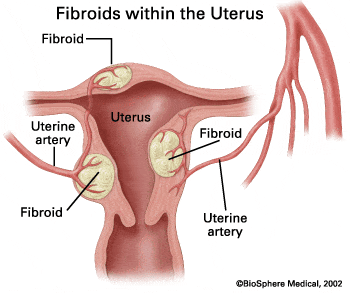Fibroids are usually noncancerous, smooth muscle tumors, primarily found in or around the uterus. They are extremely common, and by the age of 50 over 70% of women have them. They are even more common in Black women, with estimates that 8 in 10 Black women may be affected by uterine fibroids.
“There is often confusion about the differences between ovarian cysts and fibroids,” shares Dr. Janet Bruno-Gaston, an SGF Houston fertility specialist. “It’s important to know that fibroids are usually noncancerous masses in or on the uterine wall, while ovarian cysts are fluid-filled sacs that develop within the ovary.”
What causes fibroids?
While the cause of uterine fibroids remains unknown, researchers believe their development is multi-factorial. A genetic mutation in a single smooth muscle cell can lead to the development of these tumors, while exposure to estrogen and progesterone throughout a woman’s reproductive life can facilitate their growth. Due to the lack of hormonal exposure, fibroids often shrink during menopause, helping alleviate most of the associated clinical symptoms.
What are symptoms of fibroids?
Symptoms from uterine fibroids can vary widely depending on the number, size, and location of the fibroids. If the fibroids are small, you may not have any symptoms at all. In fact, you may not know that you have fibroids until you go through fertility testing. Common symptoms indicating fibroids include:
- Abnormal or excessive bleeding, especially during periods
- Pelvic pressure or pain
- Constipation or urinary frequency based on mass effect and position of fibroids on bowel or bladder
“Some fibroids may not result in any symptoms, however, there may be abnormal uterine bleeding when there are fibroids located near the lining of the uterus,” shares Dr. Bruno-Gaston. “Other women may experience cramping and pelvic pain with sexual intercourse.”
Large fibroids positioned around your bladder or bowel can cause pelvic pressure resulting in urinary frequency and urgency or changes in bowel habits.
How are fibroids identified?
Fibroids can be identified on clinical exam or pelvic imaging. Your provider may suspect uterine fibroids based on the clinical symptoms you are experiencing. On the pelvic exam, your physician can assess the shape and size of your uterus and that may be adequate to make the diagnosis. Pelvic imaging may be used to confirm the diagnosis and better characterize the size and location of the fibroids. Your physician may perform a pelvic ultrasound, hysterosonogram, or hysterosalpingogram to identify the fibroids. These techniques use a variety of methods to help your physician learn more about your symptoms and the impact of your fibroids.
How do fibroids affect fertility?
Fibroids can impact fertility in many ways. Fibroids can directly distort the uterine cavity, leading to changes in endometrial development and receptivity. They can also block the fallopian tubes and restrict sperm access to the egg after ovulation. Additionally, fibroids can disrupt normal blood flow throughout the uterus and trigger the immune system leading to local inflammation. These changes can decrease the chance of fertilization, implantation, and successful early pregnancy development.
How are fibroids managed?
Fibroids can be managed with medications, surgery, or a combination of both. When deciding the best treatment approach, your provider will consider the severity of your clinical symptoms, fibroid size or location, and your desire for future family planning. Medical management may involve oral pills or injections to stabilize your uterine lining or decrease the size or growth of your fibroids. For large fibroids or those directly impacting the uterine cavity, surgery may offer better outcomes. Your physician may take a vaginal approach with hysteroscopy, where a telescope-like device is advanced through the vagina into your uterine cavity. For larger fibroids in the wall or outside of the uterus, an abdominal approach with laparoscopy or laparotomy may be recommended. There is also emerging evidence for interventional radiology techniques including uterine fibroid embolization or high-intensity focused ultrasound to interrupt blood flow or ablate fibroids. Patients interested in future childbearing should consult a fertility specialist to review these options carefully to help determine the next best steps for managing their fibroids.
To schedule a New Patient Appointment with Shady Grove Fertility please call 1-877-971-7755 or click here.
Medical contribution by Janet Bruno-Gaston, M.D., MSCI
Janet Bruno-Gaston, M.D., MSCI, is board certified in obstetrics and gynecology and in reproductive endocrinology and infertility (REI). Dr. Bruno-Gaston received her medical degree from Morehouse School of Medicine, where she was recognized as a Community Health Honors Scholar for her work with health care disparities.



